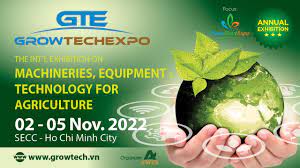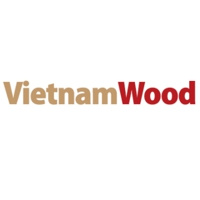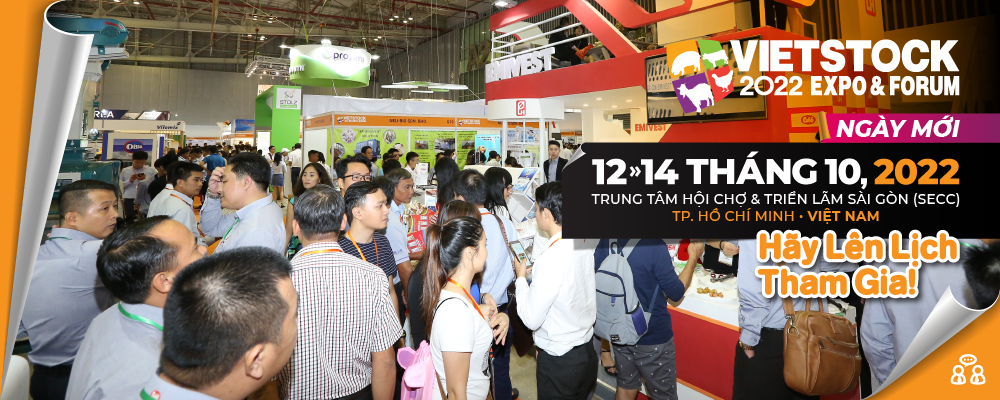- Read all
- Rice
- Fisheries
- Cassava
- Fertilizer & Pesticide
- Coffee
- Animal Feed
- Cocoa
- Seed
- Tea
- Wood
- Pepper
- Agricultural Cooperations
- Cashew
- Agricultural Investments
- Rubber
- Governmental Policies
- Sugarcane
- Agricultural Startup Ecosystem
- Corn
- Technological Innovations
- Spices
- Organic Agriculture
- Bean
- Food Manufacturing
- Fruit & Vegetable
- Agricultural Value Chain
- Flower
- Water & Waste Management
- Meat
- Processed Food
- Dairy
- Plant Originated Products
- General Agro Commodities
- Animal Originated Products
VIETNAM: ASPIRING TO BECOME A GLOBAL FOOD POWERHOUSE IN THE 21ST CENTURY
December 2, 2021
Vietnam aims to put agriculture on a green, low-emissions trajectory to realize the country's carbon neutrality commitment by 2050.

Minister Le Minh Hoan had a working session in June 2021 with Ms. Carolyn Turk, Country Director for the World Bank in Vietnam. Photo: Tung Dinh.
Agriculture in Vietnam has always been a pioneer in the Doi Moi process and a success story. It has significantly contributed to Vietnam’s remarkable success in poverty reduction and food security. As Vietnam’s agriculture becomes more globally integrated, the country aims to put the sector on a green, low-carbon trajectory to meet the net-zero level commitment by 2050.
That vision will also help Vietnam to lower costs, consume fewer inputs and resources, and create a multi-value integration, thereby affirming the country’s status as a powerhouse in ecological agriculture and carbon neutrality. It will also help to position Vietnam as a Transparent - Responsible - Sustainable food supplier.
The world's model of agricultural growth
The early years of the 21st century are a turning point for the food system in Vietnam. It started from one of the poorest countries in the late 1980s - early 1990s with 60% of the population living below the poverty line. Thanks to the Party and the State's Reform ("Doi Moi") decision, transforming from a subsidized planned economy to a socialist-oriented market economy with diversified economic sectors and unlocking agricultural resources through the Land Law in 1993. Vietnam had fundamentally reduced poverty and balanced food supply and demand by 2000. Subsequently, with the introduction of active international integration policies, accession to the WTO and the signing of 17 Free Trade Agreements, Vietnam's agri-product supply and distribution system has become increasingly linked with global markets.
Vietnam has not only ensured its domestic food security but also become an important contributor to global food security. Vietnam exports more than 6 million tons of rice per year, or nearly 10% of total global rice exports, and ranks as the third largest rice exporter in the world, after India and Thailand. By quantity, Vietnam is the leading exporter of cashew nuts and pepper, and the second largest exporter of coffee after Brazil. Vietnam is also among the top exporters of seafood, vegetables and timber products. In recent years, half of Vietnam's total agricultural output is exported, generating more than USD 40 billion a year in export revenues.
Agriculture and rural areas have become the key pillars and solid foundations to protect the country in difficult times. During the initial years of Doi Moi, the East Asian economic crisis in the late 1990s, the world financial crisis in the 2010s and the on-going Covid-19 pandemic, food security has always been maintained, contributing to inflation control and stronger foreign currency inflows thanks to the increasing trade surplus of agro-forestry-fishery products. The countryside has always been a safe “home”, providing livelihoods for the rural population who had migrated to cities upon their return. Moreover, agriculture is a strategic tool for preserving and promoting Vietnamese culture and values and defending the country’s borders.
Vietnam's agricultural productivity and output have consistently grown over the past three decades, and Vietnam is becoming the world's model for agricultural growth, especially in terms of domestic rice supply. But the agricultural growth has been achieved through more intensive use of inputs, including chemical fertilizers and pesticides, antibiotics (for livestock), and water. As a result, greenhouse gas (GHG) emission from agriculture has been increasing, accounting for 18% of Vietnam's total emission today. It is estimated to reach over 120 million metric tons of CO2 equivalent by 2030. In a business-as-usual scenario, half of the emission willcome from rice production. Intensive use of inputs has also raised concerns about food quality and safety.
With a low average farming area per household, Vietnam's agriculture is dominated by smallholding farmers. The fragmented production leads to high costs, low quality and value addition, inequality in the distribution of benefits among stakeholders, and disruption of the supply chains. Economic inefficiency and low labor productivity have driven the majority of young, healthy, creative and skillful rural workers to other economic sectors. As a result, Vietnam's agriculture continues to face the loss of knowledgeable and capable workers, who are the contributors to its growth momentum.
Vietnam’s agricultural production and exports need to become greener, more humanitarian and more reliable
It is obvious that the momentum of agricultural growth will be squeezed if Vietnam continues to rely on the volume-based growth model in agriculture, which depends on the intensive use of chemical inputs and cheap labor. Agriculture and rural areas need to be further transformed with greater aspiration and a more evidence-based and sustainable approach.

Ms. Carolyn Turk, Country Director for the World Bank in Vietnam (middle). Photo: Tung Dinh.
The 13th Party Congress opened a new direction with the strategic goal of "Ecological agriculture - Vibrant countryside- Innovative farmers". Vietnam's agriculture has another chance to address most of the difficulties and challenges affecting the sector, creating a jump in the transition to become a "Transparent – Responsible – Sustainable" food producer and supplier, as stated by President Nguyen Xuan Phuc at the United Nations Food System Summit in September 2021. In addition, the transition contributes to the commitment of becoming a carbon-neutral country by 2050, as affirmed by Vietnam’s Prime Minister at COP26.
Vietnam's agriculture not only feeds 100 million Vietnamese people but also stands among the top 15 leading agricultural exporters in the world, reaching markets in over 190 countries and territories. Consumers demand higher quality, safer, more nutritious and more accessible agri-products. Vietnam’s agricultural production and exports need to become greener, more humanitarian and more reliable. New markets require agricultural production conducted in a responsible manner to consumers and environmental sustainability to the globe. On the contrary, the market also requires customers to be responsible for producers. They must be treated fairly and safely in work, living environment and social policy. Moreover, Viet Nam's agriculture has to show stronger accountability to the international community, especially in terms of resource conservation, biodiversity, emission reduction and climate change response.
The wind of change is blowing. The world is changing. Every country has its own plans to move towards prosperity. The wind of change will be a push for those who know how to seize the opportunities, on the contrary, it will be a drag for those who remain quietly on the sidelines. Vietnam’s agriculture cannot afford to stand on the sidelines or be passive in coping with VUCA (volatility, uncertainty, complexity, and ambiguity) since the price of standing still will be too high.
(Mr. Le Minh Hoan, Minister of Agriculture and Rural Development of Vietnam)
Vietnam’s agriculture and rural areas need to transform progressively to capture opportunities, integrate and develop along with the 4.0 Industrial Revolution. Development thinking needs to shift from agricultural production to agribusiness; from the productivity- and volume-driven approach to the value-centered approach through integrating different value systems into the products; from resource extraction to resource enrichment in order to promote sustainable production; from self-sufficiency to integration into the flow of value chains and global development trends.
In other words, it is important to shift from local to global perspectives, and from short-term to long-term and sustainable thinking. We should aspire to achieve "green values" that are stemming from "green transformation, green consumption, green economy".
With this new thinking, Vietnam can confidently set an aspiration to build an ecological and carbon-neutral agriculture powerhouse, instead of remaining as a food volume powerhouse. As one of the countries with the richest biodiversity in the world, Vietnam can become a powerhouse based on the conservation and promotion of biodiversity values.
As a country of long history, rich traditions and cultural diversity, Vietnam’s agri-food system can embed those values in its products and agriculture practices. Those values can raise the profile of Vietnam’s agri-products, and the country can become a powerhouse in innovations to integrate cultural values in the agri-food system.
The promotion of green, biodiversity and cultural values will be a breakthrough so that Viet Nam can become the Asian food innovation hub instead of an exporter of raw products with low added value and high dependence on exhaustive extraction of natural and social resources.
Innovative Thinking - Joint Action
Possessing strategic geo-economic advantages, a complete and connected transport infrastructure including domestic and inter-national waterways, railways and roads, along with strengthening governance capacity and digital transformation, Vietnam could also become an agri-food logistics center in the Asia-Pacific region, and an agro-processing center for Southeast Asia, minimizing the instability of the global agri-food supply chain in the future and offsetting the supply-demand imbalance in the global agrifood market and its impacts on farmers and consumers in Vietnam, in the region and the globe.
To transform itself, Vietnam’s agriculture cannot stand alone. The sector needs the companionship and support of other ministries, central and local agencies, international and domestic organizations, communities and individuals. It is important to promote ownership and engagement of farmers, women, youth and the whole community. It is essential to implement comprehensive and robust strategic solutions to improve the governance capacity of cooperatives, small and medium enterprises in rural areas, and engage farmers, especially the youth, in agricultural production. Farmers need long-term and equitable access to resources, especially land, and special attention must be paid to vulnerable groups such as the poor, smallholding farmers, ethnic minorities, women and young people.
It is also required to reform the management and delivery of public investment support services to turn farmers into the key drivers of a vibrant rural economy. In addition, the private sector should be incentivized to participate in responsible and green investment, the development and application of technical innovations, and the effective operation of public-private partnerships.
It is essential to create a healthy and effective development environment through administrative reforms and application of advanced science and technology, to promote research and development in agriculture, with innovations and digital transformation in agriculture as the core driving force.
Digital transformation, accompanied by green transformation and institutional reforms will help develop a multi-value, integrated agricultural ecosystem. Digital transformation will help create sustainable agricultural product value chains towards better traceability, food safety, standardization of quality, e-commerce, financial services, distribution, information and technical support.
It is also critical to promote deeper international integration, develop domestic and cross-border innovation networks and strengthen international cooperation in research, forecasting and establishment of an information system for early warning of natural disasters and diseases, for sustainable management of land, water, biodiversity, forests, transboundary water resources and marine resources...
With “Innovative Thinking” and “Joint Action”, we make the impossible become possible!
Governance reform, innovation, and international integration are the three key engines that will turn Vietnam's agriculture from a food-volume powerhouse into a ecological and carbon neutral agriculture powerhouse and neutral, and a Transparent – Responsible - Sustainable food supplier to the world.
About the authors:
*Mr. Le Minh Hoan is Minister of Agriculture and Rural Development
Ms. Carolyn Turk is the Country Director for the World Bank in Vietnam.
Related news
-
Growing organic oranges is difficult to do but the price is twice as high
Tuyen Quang In this year's orange crop, organic orange growers in Ham Yen district (Tuyen Quang) earned hundreds of millions of dong in profit because oranges were well priced and accepted by the demanding market.November 24, 2022 -
Heighten Vietnam - USA cooperation relationship through agriculture
(VAN) Through 8 proposals to the new US Agricultural Counselor, Deputy Minister Nguyen Hoang Hiep hoped that trade between the two countries would soon regain its growth momentum.November 23, 2022 -
World wheat prices soar, India seizes export opportunities
India completed deals to export half a million tonnes of wheat in recent days and is expected to sign more contracts to take advantage of record-high global prices.November 22, 2022
Events See more

Vietnamplas 2022 - Vietnam International Plastic and Rubber Industry Exhibition
23-03-2023 - 26-11-2022 09:00 - 17:00
Saigon Exhibition and Convention Center (SECC) – 799 Nguyen Van Linh Boulevard, District 7, City. Ho Chi Minh.

GROWTECH EXPO - FLORAPLANTEXPO 2021
02 - 05-11-2022 09:00 - 17:00
Saigon Exhibition and Convention Center (SECC) – 799 Nguyen Van Linh Boulevard, District 7, City. Ho Chi Minh.

VTG 2022
18 - 25-10-2022 09:00 - 17:00
Saigon Exhibition and Convention Center (SECC) – 799 Nguyen Van Linh Boulevard, District 7, City. Ho Chi Minh.

VIETSTOCK 2022 - SPECIALISED EXHIBITION OF LIVESTOCK, FEED AND MEAT PROCESSING IN VIETNAM
12 - 14-10-2022 08:00 - 17:00
799 Nguyen Van Linh, Tan Phu Ward, Dist. 7, Hochiminh City, Vietnam

VTG 2022
21 - 27-09-2022 09:00 - 17:00
Saigon Exhibition and Convention Center (SECC) – 799 Nguyen Van Linh Boulevard, District 7, City. Ho Chi Minh.
.png)
VIETFISH 2022
22 - 26-08-2022 09:00 - 17:00
Saigon Exhibition and Convention Center (SECC) – 799 Nguyen Van Linh Boulevard, District 7, City. Ho Chi Minh.
Business Opportunities See more
-
BURANI INTERFOOD is looking for Buyers in Vietnam
Type:
November 22, 2021
-
BURANI INTERFOOD is looking for Buyers in Vietnam
Type: Wholesaling Meat
November 22, 2021
-
BURANI INTERFOOD is looking for Buyers in Vietnam
Type: Wholesaling Meat
November 22, 2021
-
BURANI INTERFOOD is looking for Buyers in Vietnam
Type: Wholesaling Meat
November 19, 2021
-
BURANI INTERFOOD is looking for Buyers in Vietnam
Type:
November 19, 2021
-
Indian purchaser looking for high quality cashew nut kernel from Vietnam
Type: Exporting Cashew
Mar 14, 2016
534
Limitless database of qualified and verified agricultural partners
124
Exclusive buy & sell leads on specific agricultural commodities
24
Agricultural events in Vietnam and Asia Pacific region
Stay informed!
Enter your email address below to receive updates each time we publishes new content
